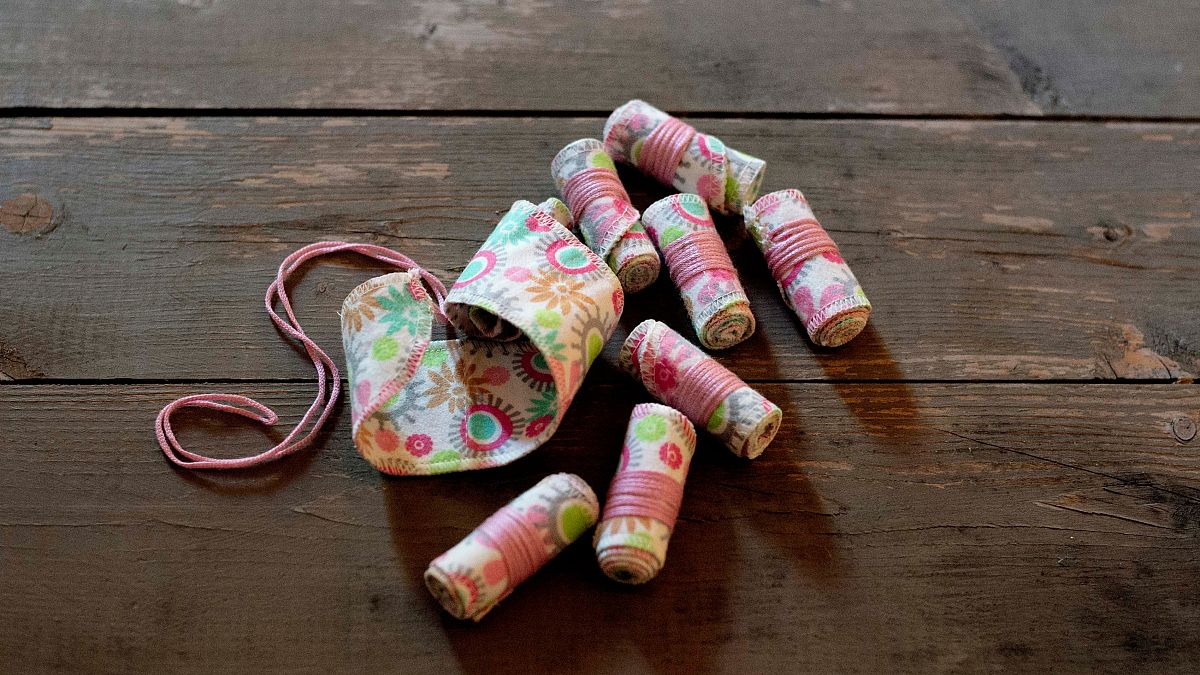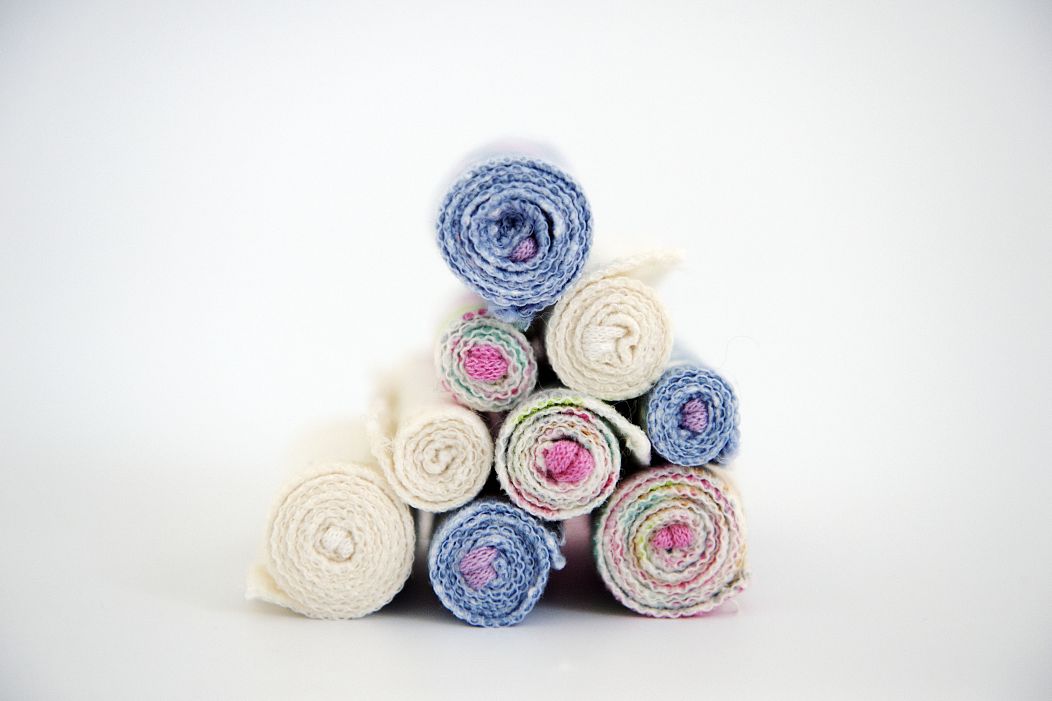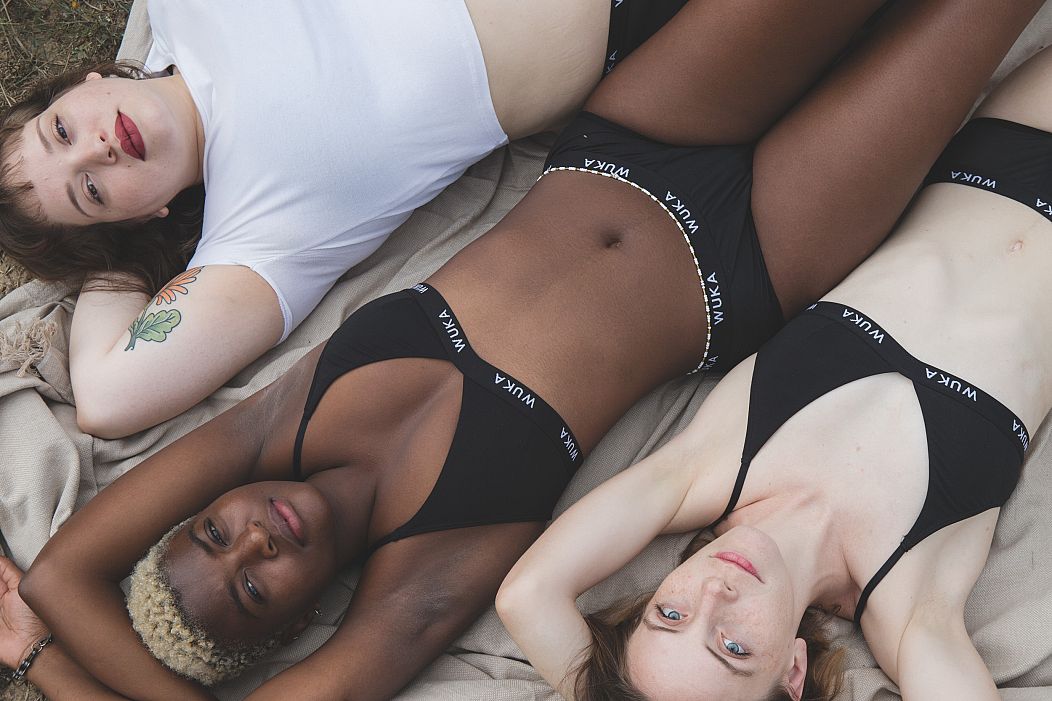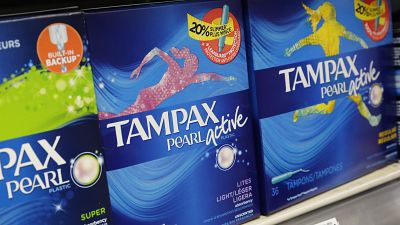We compare the sustainable options and find out who would suit cotton pads, cups and multi-use applicators.
Multi-use cloth tampons. Simply roll up, use some of the string to secure and insert as you would any other tampon.
If you’re a period product connoisseur, you may already have a reusable applicator, like this one by Dame. As a proud owner of both a reusable applicator and cloth tampons myself, I can confirm the two go together as well as their disposable counterparts.
With all the luxury of a Tampax Compak Pearl experience, but without the waste of the wrapper, the plastic applicator and eventually, the tampon. It’s advised that tampons aren’t flushed down the toilet as they go on to form fatbergs and clogs in the drains.
In fact, scientists at Harvard University estimate that producing a year’s worth of period products is worth 5.3kg in greenhouse gas emissions. That’s before counting the cost of their end of life.
The vast majority of pads aren’t recyclable. Megabrand Always informs its customers that general waste is the only place for its pads. And while the absorbent core might break down over time, the remainder will be left to fester in landfill or incinerated, depending on how your local authority deals with its waste.
Meanwhile, images of plastic tampon applicators washing up on beaches have become a common sight. And the tampons themselves? When flushed down the toilet, they don’t break down like loo roll. According to the Environmental Protection Agency, the synthetic absorbents are likely to swell up, causing blockages and contributing the rise of fatbergs.
A new kid on the block?
Sweden-based Imse Vimse released its lines of reusable tampons in a bid to give every period product on the market a sustainable alternative.
Its range of organic cloth tampons are certified as free from harsh chemicals, so as well as saving money and helping care for the planet, users can rest assured they’re not introducing anything harmful into their bodies.
“Organic cotton is grown without the use of pesticides and chemical fertilisers making it safe for farmers and kinder to the environment, reducing soil erosion and destruction of local habitats,” the brand says. “It’s also extremely kind to your skin, feeling soft and gentle so it’s the perfect fabric for reusable tampons.”
It’s important to note that cloth alternatives can cause toxic shock syndrome just as easily as their disposable alternatives. Made of cotton cloth rather than the expanding cotton and rayon mix of its single use ancestors, they may also need replacing more often – Imse Vimse recommends replacing every four to six hours, as opposed to the six to eight hours many conventional brands suggest.
But there are plenty of other options, vying for the crown of best sustainable and good-for-you period product. Which one suits you best?
If you hate feeling like something is a bit different down there
Period pants might be the one for you. And recently, they’ve exploded in popularity. Like Wuka, which uses materials made from beech trees to cut down on water usage. In fact, its beech-derived micro modal fibre requires less water to produce than cotton. It’s also a breathable material, designed to ensure that while they’re completely absorbent, the pants are still breathable, minimising any hot, stuffy, sticky or smelly side effects.
For those afraid of leaks, the leg holes are cut to sit snugly against the legs, making for a secure fit. Meanwhile, the fabric holds up to 200 times its own weight in water.
The low maintenance option
Menstrual cups like OrganiCup are an option that needs minimal washing up and no washing machines after use compared with many of the sustainable options. Made with sustainable, medical grade silicon, it’s free from hazardous chemicals, BPA and latex.
The silicon construction allows for a quick swill out between uses and you can pop it straight back in, so no carting spares around with you.
Some brands, like Ruby Cup operate a get one, give one system, donating a cup to a girl or woman in period poverty for each cup bought.
The stick with what you know option
As mentioned above, the reusable applicator allows you to continue uses disposable or reusable tampons but without the waste of a single-use applicator. If you don’t fancy transitioning to reusable tampons just yet, pair it with tampons from brands like Yoni or TOTM, whose organic cotton tampons are biodegradable.
The original eco option
There’s still a lot to be said for the option that’s been around since the dawn of time. Reusable pads are machine washable and come in a range of funky patterns to cheer you up.
Bloom & Nora uses recycled PET to make its pads, with the claim customers could save up to £2,000 by switching to reusables, bringing the cost per use down by at least 75%. And that’s all while performing better and putting an end to pesky adhesive strips, says the brand.





